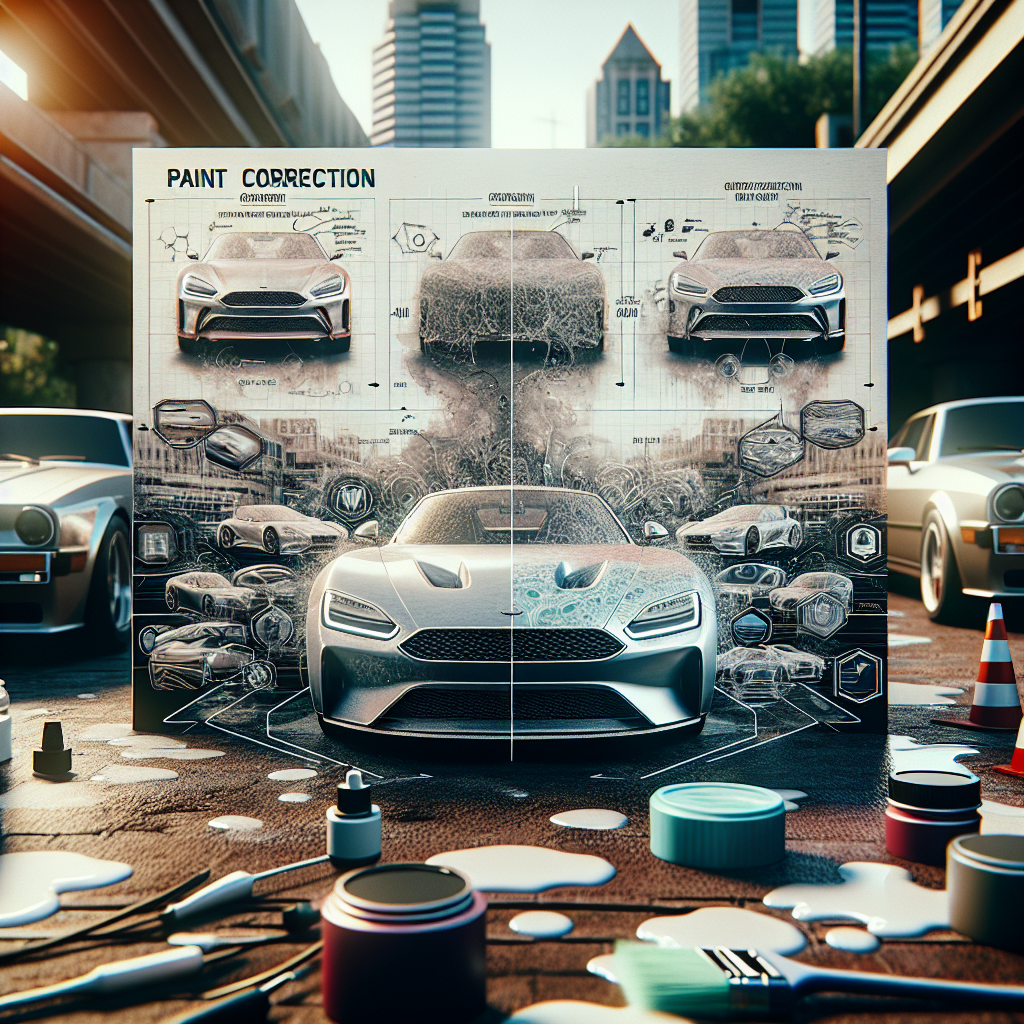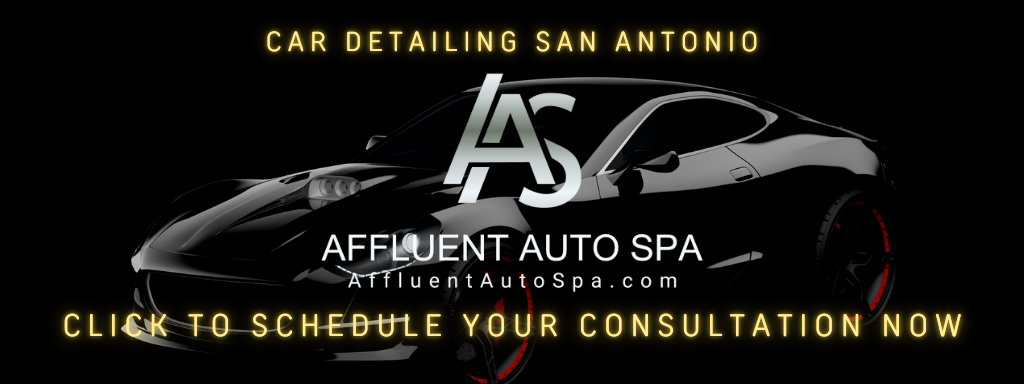Understanding Paint Correction Techniques
What is Paint Correction?
Alright, let’s dive into the nitty-gritty of what paint correction actually is. In my experience, it’s the magical process of removing imperfections from a vehicle’s paint. We’re talking about swirls, scratches, and oxidation that ruin that pristine look. Think of it as a spa day for your ride, making it look brand new again!
The techniques involved can range from simple polishing to more advanced methods that utilize specialized tools and products. Each technique aims to enhance the gloss and clarity of the paint, giving it that deep, rich finish that high-end vehicles deserve.
It’s not just about aesthetics either—it’s about protecting your investment. High-end cars are not just means of transportation; they’re assets that represent your taste. And believe me, keeping that paint in top-notch condition is key to maintaining their value.
Types of Paint Correction
Now, let’s talk about the different types of paint correction. Over the years, I’ve learned that there are usually three main levels: single-stage, multi-stage, and enhancement. Each level caters to varying degrees of paint damage and client desires.
Single-stage correction is your entry-level option—perfect if you have light imperfections. Multi-stage is where the magic really happens, especially if your car has some serious love marks. Enhancement is a great option if you just want to boost that gloss and shine without a full correction.
Understanding which type you need is essential, so I always recommend consulting with an experienced detailer who can assess the condition of your vehicle’s paint. This way, you’ll get exactly what you need without overspending.
The Process of Paint Correction
Let’s get into the actual process of paint correction. It typically involves cleaning the surface thoroughly, followed by a careful polishing process using different grades of compound. I’ve spent hours polishing just to get to that ideal finish!
What’s crucial here is using the right tools: dual-action polishers and foam pads can make a world of difference. It’s about finding that balance; we don’t want to remove too much clear coat—just enough to eliminate defects.
And don’t forget the importance of a good finishing touch! After polishing, I always recommend applying a quality sealant or wax. This not only adds shine but also protects the paint from future damage and environmental factors.
Benefits of Paint Correction for High-End Vehicles
Enhanced Aesthetic Appeal
First off, let’s talk about that eye-catching look. There’s nothing quite like a freshly corrected paint job. I’ve had people stop and stare at my cars after a paint correction—there’s a real ‘wow’ factor that comes with it!
When you invest in high-end vehicles, you want them to look their best. The enhanced gloss and clarity levels achieved through paint correction not only turn heads but also reflect your attention to detail as an owner.
Plus, a good-looking car is more enjoyable to drive. Whether you’re cruising through the streets of San Antonio or parked at a local car meet, the compliments will pour in, and there’s a certain pride that comes with showing off your ride.
Improved Resale Value
One major factor many don’t consider is how paint correction can drastically improve resale value. When it comes time to sell, a well-maintained, beautiful exterior can easily set you apart from the competition.
I’ve seen it time and again—cars that haven’t had proper care go for significantly less than those with pristine paintwork. Buyers are more inclined to pay top dollar for a vehicle that looks flawless. A simple investment in paint correction can yield significant returns later.
So, if you’re considering selling your high-end vehicle, take the time to get that paint sorted out first! It’s totally worth it in the end.
Protection Against Environmental Damage
Paint correction isn’t just about looks; it’s also a shield for your investment. Over time, natural elements like UV rays, bird droppings, and tree sap can wreak havoc on your vehicle’s paint job. And trust me, you don’t want your pride and joy ruined by something so preventable!
After a good correction and subsequent sealant application, your paint will be much better equipped to resist these damages. It’ll act like a barrier, protecting against the daily grind that every vehicle faces.
Giving your car this added layer of protection will not only keep it looking fantastic but also maintain its value and integrity over time.
Choosing the Right Professional for Paint Correction
Experience Matters
When it comes to paint correction, experience truly matters. I’ve found that the best detailers are those who’ve spent years honing their skills and refining their techniques. They can swiftly identify the needs of your vehicle and recommend the best solution.
In my travels around San Antonio, I’ve met some incredible detailers who know their stuff. They can assess paint condition and tailor their approach based on your vehicle’s specific needs. It’s like getting a custom suit—tailored just for you!
So do your research! Check reviews, ask for referrals, and don’t be afraid to ask about a professional’s experience with high-end vehicles specifically.
Tools and Techniques Used
Next up, let’s chat about the tools and techniques used by your chosen detailer. Knowledge of the right equipment, like polishers and compounds, is key. A good detailer will have an arsenal that includes everything from rotary polishers to high-quality microfiber cloths.
In my own experiences, I always prefer detailers who explain their techniques to me. They should know their stuff inside out and not hesitate to share their process. A thoughtful approach ensures that your vehicle receives the best treatment.
Ultimately, communication is critical. If a detailer isn’t transparent about the tools they use or their process, it’s a red flag. A good professional will walk you through everything they do and why they do it.
Consultation Before Service
Lastly, I can’t stress enough how important a consultation is before committing to paint correction. A reputable detailer will always offer a pre-service assessment. This initial meeting helps you both agree on what’s needed and what results to expect.
During this consultation, feel free to ask questions about their previous work and see before-and-after photos. It’s a great way to gauge their quality. Plus, getting a feel for their personality helps; building a rapport is essential!
Taking the time to discuss your vehicle and set expectations can make a significant difference in the end result. It fosters trust and maximizes satisfaction.
Final Thoughts on Paint Correction
At the end of the day, paint correction is a fantastic investment for high-end vehicles in San Antonio. It enhances not just the visual appeal but also the longevity and resale value of your car. Remember, it’s all about maintaining that luxurious image and protecting your assets!
So if you’re on the fence about whether or not to go for it, let my experiences guide you. Speaking from personal experience, the benefits absolutely outweigh the costs.
Take pride in your ride; after all, isn’t that what it’s all about? A beautifully maintained vehicle is not just a car; it’s an extension of who you are!
FAQ
1. What is paint correction?
Paint correction is the process of removing imperfections such as swirls, scratches, and oxidation from a vehicle’s paint to improve its clarity and shine.
2. How long does paint correction take?
The duration of paint correction can vary based on the vehicle’s condition and the level of correction needed. Typically, it ranges from a few hours to a couple of days.
3. How often should I get paint correction done?
It generally depends on your environment and how you care for your vehicle. Many enthusiasts recommend every 1-2 years for optimal maintenance.
4. What kind of vehicles benefit the most from paint correction?
High-end or luxury vehicles definitely benefit most from paint correction due to their investment value and need for maintaining a pristine appearance.
5. Can I do paint correction myself?
While DIY paint correction is possible, it requires knowledge, skill, and the right equipment. For best results, I’d recommend hiring a trained professional especially for high-end vehicles.



